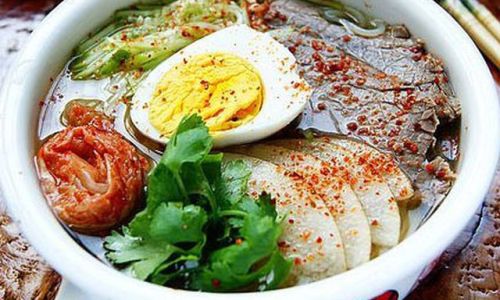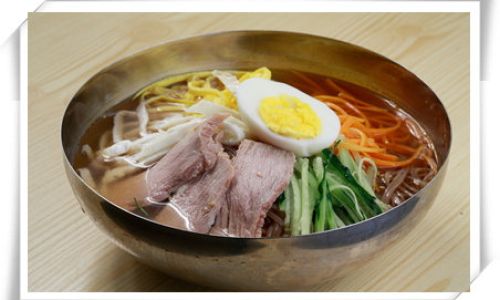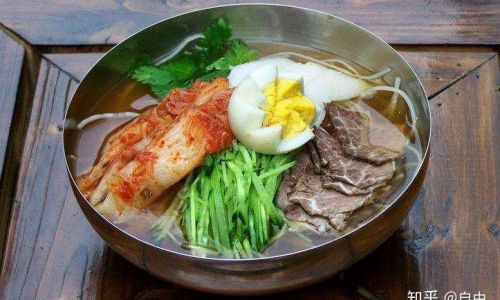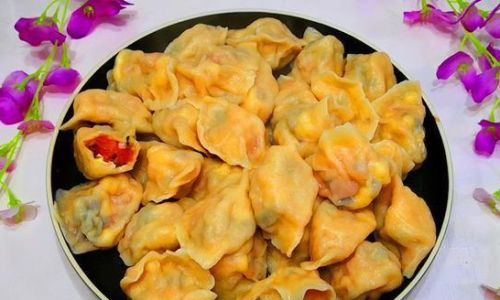Introduction
Cold noodles, a refreshing dish enjoyed across various cultures and cuisines, offer a delightful contrast to hot, hearty meals during warmer weather. Whether you’re partial to Korean bibimbap noodles, Japanese soba, Vietnamese bun, or Chinese liangmian (cold noodles), the key to making them truly mouthwatering lies in a combination of meticulous preparation, the right ingredients, and a touch of creativity. This guide delves into the intricacies of how to elevate your cold noodle dishes from ordinary to extraordinary, ensuring every bite is a delightful experience for your taste buds.

Selecting the Perfect Noodles
The foundation of any cold noodle dish is, of course, the noodles themselves. Different types of noodles lend unique textures and flavors to your meal. Here are some popular options and tips for selecting the best ones:
-
Soba Noodles: Made from buckwheat flour, soba noodles have a nutty flavor and a slightly chewy texture. Look for those that are 100% buckwheat for the authentic taste, though blends with wheat flour are also common.
-
Udon Noodles: Thick and white, udon noodles are made from wheat flour and offer a soft, springy bite. They are perfect for dishes that require a heartier noodle base.
-
Rice Noodles: Used extensively in Vietnamese cuisine, rice noodles come in various widths from thin vermicelli to wider flat noodles. They have a delicate flavor and a tender texture when cooked properly.
-
Somyeon (Korean Glass Noodles): Made from potato starch or mung bean starch, these translucent noodles are elastic and slightly sweet. They absorb flavors well and hold up well in cold dishes.
-
Chinese Wheat Noodles: These can range from thin, delicate strands like those used in liangmian to thicker, hand-pulled noodles. They offer a robust wheat flavor and a firm texture.
When choosing noodles, always check the expiration date and look for those that are fresh or dried without excessive additives. Proper storage is crucial; keep dried noodles in a cool, dry place, and cooked noodles should be refrigerated promptly to prevent spoilage.
Cooking Noodles to Perfection
The way you cook your noodles can significantly impact their texture and taste in your final dish. Here are some general guidelines:
-
Boiling Water Method: Use plenty of water to ensure the noodles have enough space to cook evenly. Salt the water lightly to enhance flavor. Follow the package instructions for cooking time, but be prepared to adjust based on your preference for firmness.
-
Ice Bath: After boiling, plunge the noodles into an ice bath to stop the cooking process and maintain their firmness. This is especially important for rice and wheat noodles to prevent overcooking.
-
Draining and Tossing: Drain the noodles well and toss them gently to prevent sticking. You can use a little oil if necessary, but be mindful of adding too much, as it can affect the absorption of sauce later.

Crafting a Flavorful Sauce
The sauce is what transforms a simple bowl of noodles into a culinary masterpiece. Here are some key components and techniques for creating a balanced, flavorful sauce:
-
Soy Sauce Base: Start with a good-quality soy sauce. For Korean-style dishes, use a combination of soy sauce, sesame oil, rice vinegar, and gochujang (chili paste) for a tangy, spicy kick.
-
Sesame Sauce: Toasted sesame seeds blended with soy sauce, rice vinegar, garlic, and a touch of sugar create a rich, nutty sauce that complements many Asian flavors.
-
Tahini Sauce: For a Middle Eastern twist, blend tahini with lemon juice, garlic, salt, and water to create a creamy, tangy dressing.
-
Peanut Sauce: A blend of peanuts, soy sauce, garlic, ginger, brown sugar, and water or coconut milk makes a creamy, slightly sweet sauce that pairs well with both savory and spicy elements.
-
Chili Oil: Infuse vegetable oil with dried chili flakes, Sichuan peppercorns, and garlic for a fragrant, spicy oil that adds depth to your sauce.
Remember, balance is key. Taste your sauce frequently as you mix, adjusting sweetness, saltiness, acidity, and heat to your liking.
Incorporating Fresh Ingredients
Fresh ingredients are what bring your cold noodle dish to life. Here are some must-haves and optional additions:
-
Vegetables: Shredded cucumbers, carrots, bell peppers, radishes, and spinach add crunch, color, and nutrients. Blanch or marinate vegetables briefly to enhance their flavor.
-
Proteins: Grilled chicken, shrimp, tofu, or even a soft-boiled egg can provide a satisfying protein boost. Slice meats thinly and marinate if desired to infuse them with flavor.
-
Herbs and Greens: Fresh cilantro, mint, basil, and scallions add a burst of freshness and aroma. Chop them finely and sprinkle over the noodles at the last minute to preserve their vibrancy.

-
Toppings: Toasted sesame seeds, chopped nuts, and crispy onions add texture and additional layers of flavor. Don’t overlook the power of a good sprinkling of sea salt or a drizzle of toasted sesame oil.
Presentation and Serving
Presentation can elevate a dish from good to great. Here are some tips for serving your cold noodles:
-
Arrangement: Arrange the noodles in a visually appealing manner, perhaps in a nest or swirl. Place toppings and garnishes strategically to create contrast and interest.
-
Chilling: Serve your cold noodles chilled, either by refrigerating the entire dish before serving or by using chilled bowls and utensils.
-
Garnishes: A final flourish of fresh herbs, a sprinkle of chili flakes, or a drizzle of chili oil can make a big difference.
-
Accompaniments: Offer condiments on the side, such as extra soy sauce, chili sauce, or pickled vegetables, to allow diners to customize their dishes to their liking.
Conclusion
Crafting delicious cold noodles is an art that combines precision, creativity, and a deep understanding of flavors. By selecting the right noodles, cooking them to perfection, crafting a balanced sauce, incorporating fresh ingredients, and presenting your dish thoughtfully, you can transform a humble bowl of noodles into a culinary delight. Whether you’re serving a family dinner, hosting a gathering, or simply treating yourself, remember that the key to success lies in attention to detail and a willingness to experiment. Happy cooking, and enjoy every bite of your delicious cold noodles!
This comprehensive guide should provide you with a thorough understanding of how to make cold noodles truly exceptional. From selecting the perfect noodles to crafting a flavorful sauce and incorporating fresh ingredients, each step is crucial in achieving a dish that is not only satisfying but also visually appealing. Happy experimenting, and may your cold noodle creations become a cherished part of your culinary repertoire!





0 comments